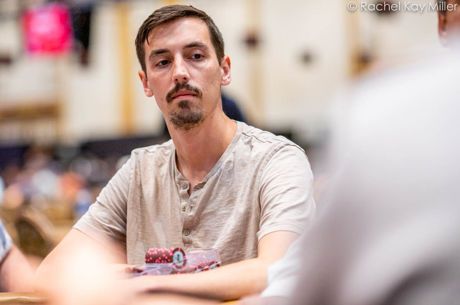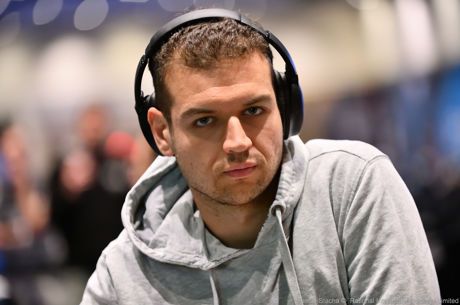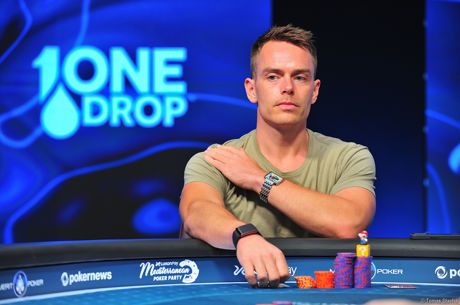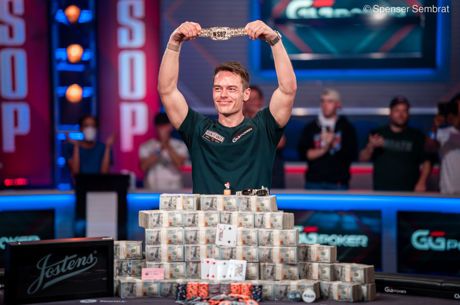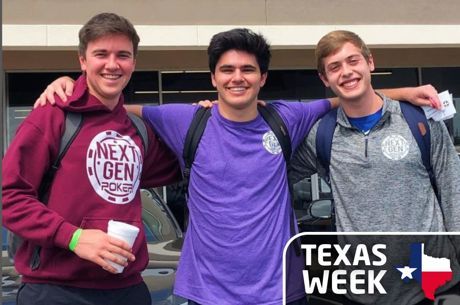The PokerNews Interview: Barry Greenstein, Part Two

For Part 1 of PokerNews’ interview with Barry Greenstein, click here.
“Did you tell him real poker players don’t do interviews, because they’re too busy playing?” So yells Phil Ivey from across Bobby’s Room at Barry Greenstein, who has generously agreed to take some time on an early Saturday evening to share his thoughts about poker’s past, present, and future.
“Didn’t I see you did one yesterday?” Greenstein calls back across the room to Ivey. Greenstein returns to this interview, where we discuss the upcoming WSOP.
PokerNews: You’re a member of the Players Advisory Council for the World Series of Poker, [and there have been] a few questions about some of the changes for this year’s WSOP. Last summer you won your third bracelet in the $1,500 razz event. The buy-in for that one has been changed to $2,500 this year....
Barry Greenstein: One of the reasons for the buy-in being changed is that some people were feeling like there wasn’t enough play. You know we’re going to have triple chips this year at the World Series. Two years ago there was too much play at the early levels in the limit events, and then last year some people felt that there wasn’t quite enough play. But now, with the $2,500 buy-in having us start with 7,500 chips, there’s going to be more play in that razz event in the early levels, and I think people are going to be happy with that. Some were hoping for two razz events: a $1,500 buy-in and maybe a $5,000 championship. And so we compromised, so the serious razz players feel like it’s going to be a big enough prize pool, but it’s still not out of reach for more entry-level WSOP players.
PN: Another change concerns the no-limit deuce-to-seven draw event. That was a $5,000 buy-in event with rebuys last year. This year there are two NL 2-7 draw events, one for $2,500 and the World Championship one for $10,000, neither of which will have rebuys. You won your first WSOP bracelet in that event, correct?
Greenstein: Yes. I’ve always done well in that event, and I feel like I have the best shot in that no-limit deuce-to-seven, because I’ve played it a lot. You know the people who have the best shot are the people in the Big Game who’ve played it a lot. And of the people in the Big Game — and I’m talking about people like Doyle, and maybe Lyle Berman and Bobby Baldwin and Phil Ivey and people like that — I’m the one who seems to take that event the most seriously these days. I’m almost the younger statesman of that group, except for maybe a guy like Phil Ivey. I came third [in that event] last year, and first a couple of years before that [in 2004]. I’ve gotten to the final ten players, I think, every time but once that I’ve played it. So I always have a good shot in that event.
Part of it is, although I haven’t had a lot of rebuys like some people, having extra money to rebuy gives you a big edge over the field. This year we’re not doing that, and it makes it more of an even competition. So that was always the event that I looked to, if I had bracelet bets. That was always my number one event. And I used to figure that I had about a 5% chance of winning that event, when you take into account that there are going to be, maybe, 60 to 80 players, and I’ll rebuy more than the average person, and I’m more experienced in that game. Now I’ll have to lower that percentage some because I don’t have the extra money as far as rebuys are concerned that I’m allowed to make over players who are only going to have one bullet, as we say.
PN: What sort of field do you think the $40,000 buy-in, “40th Annual No-Limit Hold’em” event is going to attract?
Greenstein: Well, I have an over-under bet with Eli Elezra that over 222 players [will enter]. A lot of people think that that’s ambitious because it’s right at the beginning of the World Series. But the way I look at it is we’ll get 300 or 400 for the WPT Championship which is $25,000 — not that much different — and so why not over 222 players for the $40,000 no-limit? [The WPT World Championship attracted a total of 337 entrants.]
The $40,000 event will probably get good television coverage. We know it’s going to have a great final table, because it’s going to be the toughest no-limit field that’s ever been assembled. You’re going to get all of the top live players who can pony up the $40,000, and I think all the online superstars will be coming out for that one, also.
PN: What about the decision to repeat the November Nine [delaying the Main Event final table until November]?
Greenstein: Well, most people judge it by the numbers, and that’s the television rating [which was up in 2008]. [But] I always look at more than just the television rating. I’m an advocate for the players, and so I look at it in terms of “What did the players get?” And if you look, just about every player from the November Nine got a contract of some sort. If you take those total contracts into account, we’re talking millions of dollars in extra money whereas in the past only the winner got that money. So, like I say, as an advocate for the players I have to view it as a success, and again look forward to this year where we’ll have nine players who not only will get millions of extra dollars in contracts, but for whom we know for future events that they will have other marketing potentials if they continue to succeed in their poker careers.
PN: On a recently-aired episode of “High Stakes Poker”, you alluded to a phrase that had come up over on Joe (Sebok)’s PokerRoad podcast — “math is idiotic.”
Greenstein: Yes.
PN: The phrase is mostly tongue-in-cheek, but back in Ace on the River [Greenstein’s 2005 autobiography and poker strategy guide], you tell an interesting story about a hand you once played against a philosophy professor back when you were a student at the University of Illinois. It actually comes up in a section called “Misusing Mathematics.” It was a stud eight-or-better hand, where he had calculated it to be over 1,000-to-1 against for you to have had precisely the right cards [three low diamonds] in the hole to scoop him...
Greenstein: Yes, mathematically, with random cards, I shouldn’t have him beat. But of course, in that particular case, there wasn’t anything random about it. I had to have the hand I had, pretty much, to be able to raise him all in, because it was obvious that he had something like possibly a six-high straight, as I recall. I wouldn’t have called his bet with one card to go without a low and flush draw, and I made it and scooped him.
PN: It was funny rereading that, and thinking of the phrase...
Greenstein: Yes, I think of it more as not that “math is idiotic,” but that math is misused a lot in poker.
PN: It makes idiots of us. Or it can.
Greenstein: Right. So many people cite the math. And we have this all the time. If you go on the Red Pro forum, I had a big argument over there with... I’ll call them the “internet kids.” You know, sharp kids, good players. Daniel Kelly, Jimmy Fricke... real respected, obviously smart kids, and good players. And they will all do some mathematical figuring of when things are plus-EV and my whole argument is to say, “You guys are missing poker things that can allow you to give yourself a greater EV than your mathematics is giving you.”
And I see this recurrent theme among the young players who think they’ve figured the game out, but a lot of times it’s getting in their way. Because in live poker there’s so much more that you can go on beyond the mathematics, especially when you are playing against weak players where you can exploit them. I think a lot of the young players are missing this, and I think that we’ll see over the next couple of years, as they get better, the better ones will wake up to not be hampered by their mathematical models which are actually getting in their way sometimes.
PN: You’ve been interviewed so many times. Is there any question that you’ve never been asked that you’d like to be able to answer?
Greenstein: No, I don’t have anything in particular that I can think of. You have to realize, I represent PokerStars. And what I do for PokerStars, you know, I represent them online, I’m involved with the games that we play on the site, and I wear a PokerStars patch when we go to tournaments. But one of the other things that I do is that if I go to Europe or anywhere else, what really they are paying me to do is to do interviews.
Because we’re kind of fighting this PR battle around the world where governments are really oppressing poker.... And so it’s my job as a spokesman for PokerStars to go to these different places and wake people up and say “There’s nothing [wrong with] poker. Poker is everyman’s game. People around the world are enjoying poker as a pastime, and most people are putting $50 to a $100 online in their accounts and playing recreationally.” So, I have to keep sending out that message. I’m not going around telling 16-year-old kids to play poker. I’m telling them to stay in school. But I am going around telling people who like to play poker that there is nothing wrong with you playing it online or wherever, and you don’t need a politician telling you how you can spend your leisure time.
Join the competition and get your PokerStars marketing code from PokerNews.com - Which offers the best bonus & marketing codes available on the internet.





